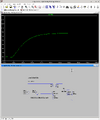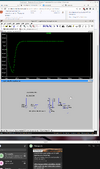Anyone know how accurate LTSpice is around coefficiency? I'm building a small flyback driver and using 1.00 have a rather excellent response. When I reduce it to 0.998 I get very little indeed. By 0.995 there's nothing.
I'll be lucky to get a transformer that does 0.995?.. so hoping it's a bug. The actual transformer I'm using is this, which doesn't specify the value. https://www.lcsc.com/product-detail/RJ45-Transformer_PROD-Tech-PSTFAQ3416-600T020_C3011570.html
Cheers,
Andrew
I'll be lucky to get a transformer that does 0.995?.. so hoping it's a bug. The actual transformer I'm using is this, which doesn't specify the value. https://www.lcsc.com/product-detail/RJ45-Transformer_PROD-Tech-PSTFAQ3416-600T020_C3011570.html
Cheers,
Andrew


